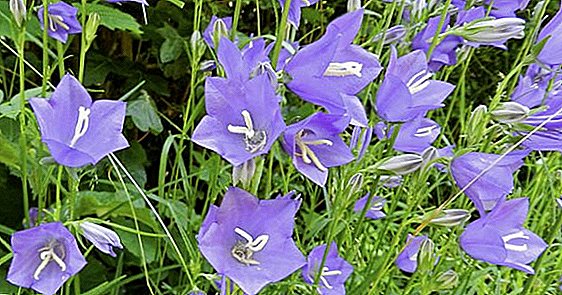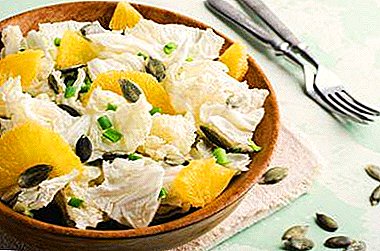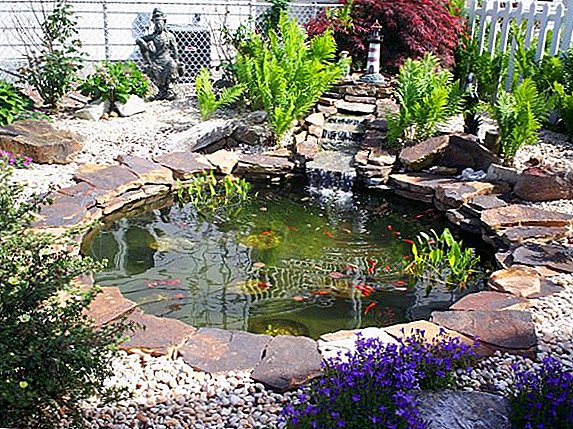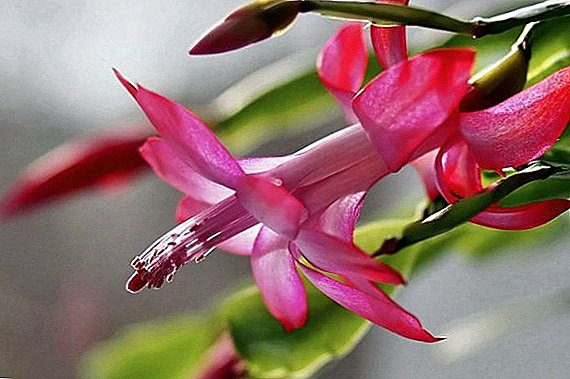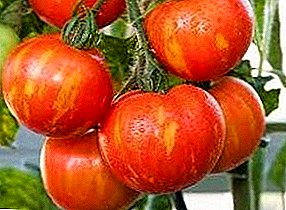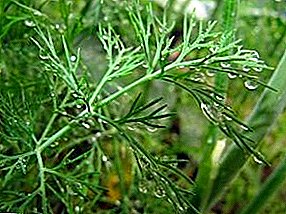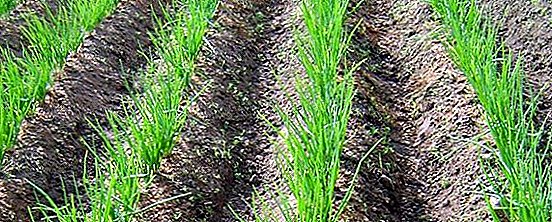 Growing onions in the Chinese way is an excellent option to get a rich and healthy harvest of onions, which has high taste qualities and is stored for a long time. With such cultivation, onions are obtained unusually large size, bright orange, slightly sweet. A distinctive feature of the harvest obtained in this way is that the onion heads have a slightly flattened shape. As with every cultivation technology, the Chinese method of planting onions has its own advantages, which each gardener will be able to evaluate, following simple agrotechnical rules and recommendations.
Growing onions in the Chinese way is an excellent option to get a rich and healthy harvest of onions, which has high taste qualities and is stored for a long time. With such cultivation, onions are obtained unusually large size, bright orange, slightly sweet. A distinctive feature of the harvest obtained in this way is that the onion heads have a slightly flattened shape. As with every cultivation technology, the Chinese method of planting onions has its own advantages, which each gardener will be able to evaluate, following simple agrotechnical rules and recommendations.
Did you know? The Chinese method of planting onions contributes to an increase in yield by 25% per unit, even in conditions of poor soil. In regions with fertile soils and favorable climatic conditions, this figure reaches 40%.
Planting onions in the Chinese way - what is it?
Chinese planting method is to grow onions on the ridges. That is, the landing of planting material is carried out not in a flat ground, but in the beds on the heights of the earth (ridges), which are prepared in advance. You can make them with the help of choppers, raking the so-called channels or rovers along the landing line. 
Did you know? Most species of onions are from China, where they are grown in large quantities. It is the Chinese farmers who manage to achieve a record amount of onion harvest. Such results are possible precisely because of the Chinese landing technology.
Benefits of using Chinese onion planting
If you compare the usual cultivation of onions with planting onions on the ridges, then the second method has much more advantages:
- The bulbs grow, have large sizes, increases productivity;
- The upper part of the fruit is well lit and warming, which contributes to uniform ripening, and also increases the resistance of onions to diseases;
- Agrotechnical procedures are simplified: loosening, weeding, watering, cutting the roots;
- Economical consumption of fertilizers due to the fact that the extreme ridges prevent the fertilizers from washing out with water;
- Cleaning onions is simplified, they are easier to pull out of the loose soil;
- The bulbs are well dried in the sun, which prevents the risk of pest damage;
How to plant onions in the Chinese way
For planting onions according to Chinese technology, it is necessary to carefully prepare planting material, this will provide an opportunity to get a rich and healthy crop.
Planting onions
 When it is best to plant a bow, can suggest the size of the planting material. Bulbs up to 10 mm in diameter are used for planting in the winter; up to 15 mm suitable for landing on the ridges in early April; about 20 mm are planted in the first half of May. Large onions with a diameter of about 40 mm are planted on the ridges for feather. It is optimal to plant onions in open ground when the average daily air temperature does not fall below + 10 degrees.
When it is best to plant a bow, can suggest the size of the planting material. Bulbs up to 10 mm in diameter are used for planting in the winter; up to 15 mm suitable for landing on the ridges in early April; about 20 mm are planted in the first half of May. Large onions with a diameter of about 40 mm are planted on the ridges for feather. It is optimal to plant onions in open ground when the average daily air temperature does not fall below + 10 degrees.
Selection of seed and preparation before planting
Before planting onions in Chinese, it is necessary to sort out planting material. Sevok scattered on the floor and reviewed for damage and dried bulbs. All damaged and dry bulbs need to be thrown away, such planting material will not give results. Two weeks before planting sevok heated to protect it from rotting on the necks, downy mildew and rifle.
To do this, planting material is laid out near the battery, for warming up, it is necessary to provide a temperature of at least 40 degrees for 10-12 hours. Before planting, the husks must be removed from the bulbs, because it slows down growth, cut off the dried part of the neck and soak the planting material in warm water (40 degrees) for 24 hours. You can add a little slurry to the water to saturate the planting material with nitrogen for faster germination.
For the cultivation of onions according to the Chinese technology, areas where vegetables have previously grown are suitable: pumpkin, cabbage, cucumbers, tomatoes, lettuce, legumes, etc. If there is no such place, you need to prepare the ground for planting in advance, preferably in the fall. For this, they dig up the site and bring in a mixture of dung humus (5 kg), superphosphate (1 tablespoon), nitrophoska (1 tsp), dolomite flour or chalk (2 tablespoons) and 1 square meter ... Closer to the terms planting, approximately by mid-April, the area needs to be re-dug, moistened if necessary, divided into ridges - ridges with an elevation of about 15-20 cm, keeping a distance of about 30 cm between them. The ridge is made enough to arrange all the planting material, observing the necessary distance between by him.
How to plant onions in the Chinese way
To plant the bow in the Chinese way, planting material should be placed on the ridges, deepening the bulbs into the ground by 2-3 cm. Then the ground around each bulb is slightly nailed. It is not necessary to compact, the soil should remain loose and not interfere with the access of oxygen to the bulbs.
Rules for the care of onions on the ridges
The rules of growing and caring for onions planted in the Chinese way are much simpler than usual.
How to water a bow
In the first month after planting onions in Chinese, watering is carried out twice using a large amount of water, subject to periodic rainfall. If there is no rain, watering increases up to 3-4 times. 17-20 days before harvesting, watering is completely stopped.
Important! Do not allow stagnation of water in the ridges, it increases the risk of rot on the necks.
Features feeding onions on the ridges
 When using the Chinese method of growing onions requires triple feeding plantings. The first is held two weeks after the landing of onions on the ridges. Watered onions with infusion of mullein (1: 5) or bird droppings (12: 1) diluted with water. The second feeding is made under the root in mid-June. Use a solution of potassium salt (40 g), urea (15 g), phosphorus-containing top dressing (15 g) in a bucket of water. The third dressing is introduced when the onion heads have begun to form. Fertilized with a solution of salt (15 g), phosphate fertilizer (25 g) per 10 liters of water.
When using the Chinese method of growing onions requires triple feeding plantings. The first is held two weeks after the landing of onions on the ridges. Watered onions with infusion of mullein (1: 5) or bird droppings (12: 1) diluted with water. The second feeding is made under the root in mid-June. Use a solution of potassium salt (40 g), urea (15 g), phosphorus-containing top dressing (15 g) in a bucket of water. The third dressing is introduced when the onion heads have begun to form. Fertilized with a solution of salt (15 g), phosphate fertilizer (25 g) per 10 liters of water.
Important! It is important not to increase recommendations on the dosage of fertilizers. At excess of top dressing greens will actively grow, and heads will remain small.
Soil care and weeding
Planting and growing onions in the ridges provides for regular maintenance of the soil: loosening and weeding. By the way Weeding is required much less frequently than with the usual planting method: On the ridges, the root system of the onion grows quickly, so that the weeds lack nutrients. In June, you need to open the bulbs: to rake the ground from the ridge between the rows. This is necessary so that the bulbs and roots are warmed up and dried in the sun.
This procedure reduces the risk of reproduction of onion flies. Also in the open form of the bulbs grow freely, acquiring a slightly flattened shape, which does not affect the quality of the crop. When a little less than a month is left before harvesting, the soil is loosened and dry irrigated.
How to deal with major pests and diseases of onions
Planting onions in the Chinese way significantly reduces the risk of disease and parasites in the onion, but does not exclude it completely. When the height of the feather onions reaches 15 cm, powdery mildew is possible. To avoid this, spray the plantings with a solution of copper sulfate with soap (10 liters of water, 15 ml of liquid soap and 7 g of copper sulfate). Spend half a liter of solution per 1 square meter.
 The most common crop pest is the onion fly. For prevention in the late autumn they dig up the ground to reduce the possibility of parasite hibernation in the soil. After harvesting, all the remains of the onion must be burned, and next year, change the planting site so that the pests do not accumulate. If the onion fly breeds massively, you can resort to more severe methods of control - chemical. Effectively helping to cope with the onion fly solution "Flyer" (5 g) "Zemlin" (3 g), "Medvetoksa" (3 g) per 1 m square. ground. It is worth remembering that the frequent use of pesticides produces addiction in pests, as a result of which the drugs lose their effectiveness. Therefore, to resort to chemical methods of pest control is necessary in case of emergency.
The most common crop pest is the onion fly. For prevention in the late autumn they dig up the ground to reduce the possibility of parasite hibernation in the soil. After harvesting, all the remains of the onion must be burned, and next year, change the planting site so that the pests do not accumulate. If the onion fly breeds massively, you can resort to more severe methods of control - chemical. Effectively helping to cope with the onion fly solution "Flyer" (5 g) "Zemlin" (3 g), "Medvetoksa" (3 g) per 1 m square. ground. It is worth remembering that the frequent use of pesticides produces addiction in pests, as a result of which the drugs lose their effectiveness. Therefore, to resort to chemical methods of pest control is necessary in case of emergency.
Important! If an onion fly was found at the onion landing site, then it is impossible to land at the same place for five years.
Harvesting Chinese onion raised on the ridges
 Onions planted with Chinese technology ripen around the end of August - the beginning of September. Before harvesting, in about a week, the roots of the onion, which did not have time to ripen, are carefully cut with a shovel at a depth of 6-8 cm. Then, loosen the soil and stop watering. Harvest, pulling the bulb for feathers. After harvesting, the onions are dried at a temperature of not more than + 35 degrees for five days in a ventilated room to avoid rotting of the neck. Then the roots are cut from the bottom and feather so that 4-5 cm of neck are left. Stored harvested onions at room temperature in nets or woven into braids.
Onions planted with Chinese technology ripen around the end of August - the beginning of September. Before harvesting, in about a week, the roots of the onion, which did not have time to ripen, are carefully cut with a shovel at a depth of 6-8 cm. Then, loosen the soil and stop watering. Harvest, pulling the bulb for feathers. After harvesting, the onions are dried at a temperature of not more than + 35 degrees for five days in a ventilated room to avoid rotting of the neck. Then the roots are cut from the bottom and feather so that 4-5 cm of neck are left. Stored harvested onions at room temperature in nets or woven into braids.
Important! It is impossible to be late with the harvest, otherwise the onion will take root, which will negatively affect its keeping quality: it will not work to save it until spring.


